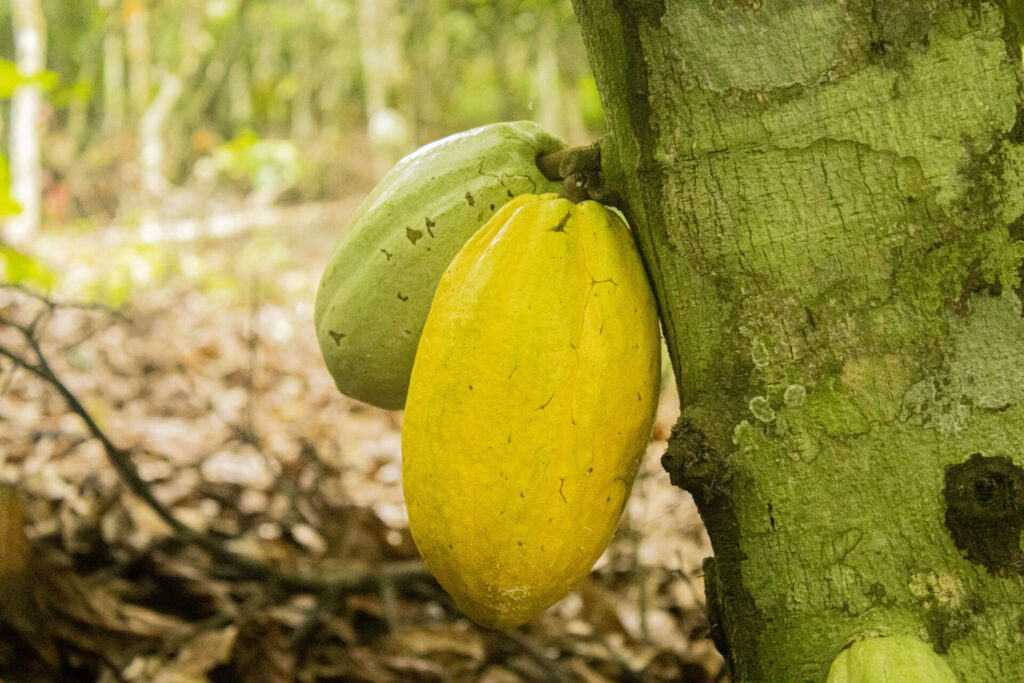I’ve spent the past decade with cocoa farmers in Côte d’Ivoire and Ghana, walking their fields, hearing their stories, and witnessing their hard work. Lately, though, I’ve been worried. The soil is worn out. The trees are ageing. Rainfall is changing. Cocoa isn’t what it used to be. Yields are shrinking, and with every smaller harvest comes tough, sometimes painful decisions for farming families.
This is about chocolate, and whether future generations will be able to enjoy it at all. A symbol of joy and celebration, chocolate is at risk of becoming a luxury few can afford, if it remains available at all. But it’s also about the millions of farmers and families whose livelihoods depend on cocoa, and who are already feeling the strain of a system under pressure.
A Perfect Storm in the Making
West Africa leads the world in cocoa production, with Côte d’Ivoire alone supplying over 40% of the world’s cocoa. Together with Ghana, the two countries produce more than 60% of the global supply—over 70% of which is exported to Europe and North America for chocolate products by brands like Nestlé, Ferrero, Mars, and Lindt & Sprüngli. So, when we talk about cocoa’s future in West Africa, we’re also talking about the future of chocolate worldwide.
But the industry is in crisis. Diseases like Cocoa Swollen Shoot Virus (CSSV) and Black Pod disease are spreading rapidly, cutting yields by 30–50% in some areas. At the same time, rising costs for fertiliser, tools, and labour, along with increasingly erratic rainfall, are making farming harder.
The soil is depleted, the cocoa trees are ageing, and so are the farmers. Few young people are stepping in, as cocoa farming doesn’t offer a decent income. Most farms are around 3 hectares, yielding just 450–500 kg/ha/year, with annual earnings below XOF 3.6 million (about $6,500 USD), well under national poverty lines and far from a living income.
The Vicious Cycle of Deforestation
In desperation, some farmers clear forests to plant more cocoa. But this short-term fix deepens the crisis, damaging ecosystems, eroding biodiversity, and accelerating climate change, further reducing yields. Cocoa cultivation, alongside rubber and palm oil, is one of the leading drivers of deforestation in West Africa.
A Path to Regeneration
There’s another way. Cavally Natural Reserve Conservation Project, supported by Earthworm Foundation, Nestlé, Touton, Barry Callebaut, Cocoasource, SWISSCO, ASAF, and government partners MINEF, MINEDDTE, SODEFOR, and OIPR—shows how collaboration can drive real impact. Since 2017, deforestation in the reserve has dropped from 3.78% to just 0.05%.
But replanting cocoa trees alone isn’t enough. We must regenerate ecosystems and support those who care for them by:
- Investing in agroforestry to restore soil, boost biodiversity, and diversify farmers’ income.
- Promoting polyculture to improve soil health, reduce pests, and strengthen food and income security.
- Training farmers in sustainable practices to boost yields without expanding farmland.
- Expanding access to finance for long-term farm investments.
- Above all, treating farmers as co-creators, valuing their knowledge, dignity, and role in shaping the industry’s future.
Côte d’Ivoire’s national forest and wildlife inventory (IFFN) reminds us: forests, wildlife, land rights, and rural economies are deeply interconnected. Solutions must be collaborative and grounded in local realities.

